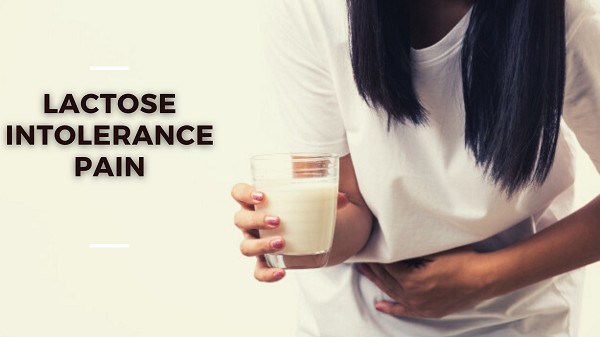
Table of Contents
What is Lactose Intolerance?
To define lactose intolerance, one needs to understand what is lactase? Lactase is an enzyme that imparts lactose into galactose and glucose. This lets the lactose gets absorbed by the bloodstream and generate energy. It is a disaccharides enzyme, which is present in the mucosa of the small intestinal brush border. Disaccharide means two sugars made of one molecule of glucose and galactose. (2)
Lactose intolerance is caused when the digestive system is unable to break the main carbohydrate in dairy products, i.e. glucose and galactose, as a result of the absence of lactase. This carbohydrate function is enormous.
The undigested lactose moves through the gut system and reaches the colon, where bacteria ferments it in the form of short-chain fatty acids.
This causes flatulence, pain, bloating, abdominal cramps, and gas. The severity of pain and symptoms depends on the level of lactose intolerance.
75% of the world’s population is lactose intolerant, however, it is less observed in the case of children below 5 years of age. (3)
What Is Milk Allergy?
Milk allergy or dairy allergy causes allergy symptoms, as the body considers the protein present in milk to be dangerous invaders; and hence, manifests the reaction as an allergy. It is most common in children under 4 years of age. Almost, 2 among 100 children have milk allergies.
Milk or Dairy allergy symptoms are almost the same as lactose intolerance such as bloating, gas, nausea, vomiting, diarrhoea, etc.
The allergic reaction caused by the dairy allergy is anaphylaxis. The symptoms of anaphylaxis are:
- Hay fever rash
- Wheezing cough
- Hives
- Swelled face and lips
- Trouble in swallowing
- Throat tightness (4)
When is a Person Prone to Dairy Allergy?
A person with either of the following health condition might be prone to milk allergy or dairy allergy.
- Various types of eczema
- Other allergy symptoms
- If one of the parents have an allergy, asthma, eczema, or hay fever
How to Diagnose Lactose Intolerance?
- Lactose tolerance test – Patients are served a drink with enormous lactose content. After 2 hours, if the sugar or glucose in the bloodstream does not rise then it denotes that the lactose remains in an undigested form. Hence, the patient is lactose intolerant.
- Hydrogen breath test – When lactose remains undigested in the digestive system, it reaches the colon to break down. This releases hydrogen, which is present in the patient’s breath.
- Stool acidity test – The presence of polylactic acid in the stool confirms the breakdown of un-metabolised lactose in the colon. (5)
How to Diagnose Milk Allergy?
The skin prick test is one of the most important tests to confirm milk allergy. In this test, a drop of liquid with dairy allergens is dropped under the skin of the forearm of the patient. After some time, a raised bump with itchy red skin would appear, if one is resistant to milk products.
A blood test can detect the number of antibodies in the blood. If the result of both tests is false positive then one must do an allergy test to identify the disease.
What are the Two Stages of Lactose Intolerance?
- Primary lactose intolerance – Due to a decrease in the production of lactase enzymes, lactose is poorly absorbed. This phase is genetically inherited.
- Secondary lactose intolerance – It is not a regular form of lactose intolerance. Celiac disease or stomach bug causing gut wall inflammation declines the production of lactase.
Treatment of Milk Allergy
Patients having milk allergies must avoid milk or dairy products. Casein and whey protein are two main components in the milk, which the immune system resists as a manifestation of allergy.
Here one needs to understand what is epinephrine? It is the only auto-injector medicine to treat anaphylactic shock. Anaphylactic shock is the reaction caused by allergy anaphylaxis as a result of milk allergy.
Treatment of Lactose Intolerance
Avoiding lactose-containing food is the only way to treat lactose intolerance. Intake of lactase tablets or enzymes may help to digest lactose-based food products. Some prebiotics and probiotics can lower the lactose intolerance symptoms. (6)
Also Read- Role of Vitamin D & Calcium in the Human Body
Non-Dairy Sources of Calcium & Vitamin D
Milk is rich in calcium and vitamin D. However, one can derive these nutrients from other sources apart from milk. Those are:
- Calcium-fortified foods – Almonds, soy milk, oats milk, bread, and juices
- Fish with bones – Whitebait, sardines fish, or any other fish
- Fortified vegetables – Broccoli, mustard flower
- Soy products – Soybean, soy milk
Insight on Food with Lactose
Milk products that contain lactose are cow’s milk, goat’s milk, hard and soft cheese, ice cream, yogurt, and butter.
Food containing lactose is a milky sauce, cookies, and confectionaries. It also includes chocolate, sweets, candy, baked goods, cake, some breakfast cereals, instant soup, etc.
Products containing casein, lactate, lactalbumin, and lactic acid are not the same as lactose. Hence, one must not get confused with the label of the products with such a proclamation. (7)
Active Pharmaceutical Ingredients, Prebiotics & Probiotics
Anzen Exports is one of the leading exporter of Active Pharmaceutical Ingredients across domestic and international companies. We also distribute nutraceutical extracts and herbal extracts. These are procured by herbal and nutraceutical companies manufacturing dietary supplements, which can provide required nutrition and is devoid of lactose or casein.
Connect with us for more information regarding product details. Read our upcoming blog to know more about various diseases, ways to combat those, nutritious food items to stay healthy, and a lot more.
Share your comments and experiences in the comment section below. We would love to answer your queries and read your comments.
Disclaimer:
Anzen Exports’ blog posts are based just on our research from cited websites. To be best informed, we advise consulting a doctor about an ingredient or medicine prior to taking it.
Sources:
- Healthline
Website – https://www.healthline.com/nutrition/lactose-intolerance-101#TOC_TITLE_HDR_2 - ScienceDirect
Website – https://www.sciencedirect.com/topics/medicine-and-dentistry/lactase#:~:text=Lactose%20malabsorption,can%20be%20absorbed%20%5B16%5D. - WebMD
Website – https://www.webmd.com/digestive-disorders/lactose-intolerance-or-dairy-allergy#1 - Mayo Clinic
Website – https://www.mayoclinic.org/diseases-conditions/milk-allergy/diagnosis-treatment/drc-20375106#:~:text=Despite%20your%20best%20efforts%2C%20if,trip%20to%20the%20emergency%20room. - Healthline
Website – https://www.healthline.com/nutrition/lactose-intolerance-101#TOC_TITLE_HDR_5 - Allergist, American College of Allergy, Asthma & Immunology
Website – https://acaai.org/allergies/types-allergies/food-allergy/types-food-allergy/milk-dairy-allergy - NIH NIDDK
Website – https://www.niddk.nih.gov/health-information/digestive-diseases/lactose-intolerance/eating-diet-nutrition
